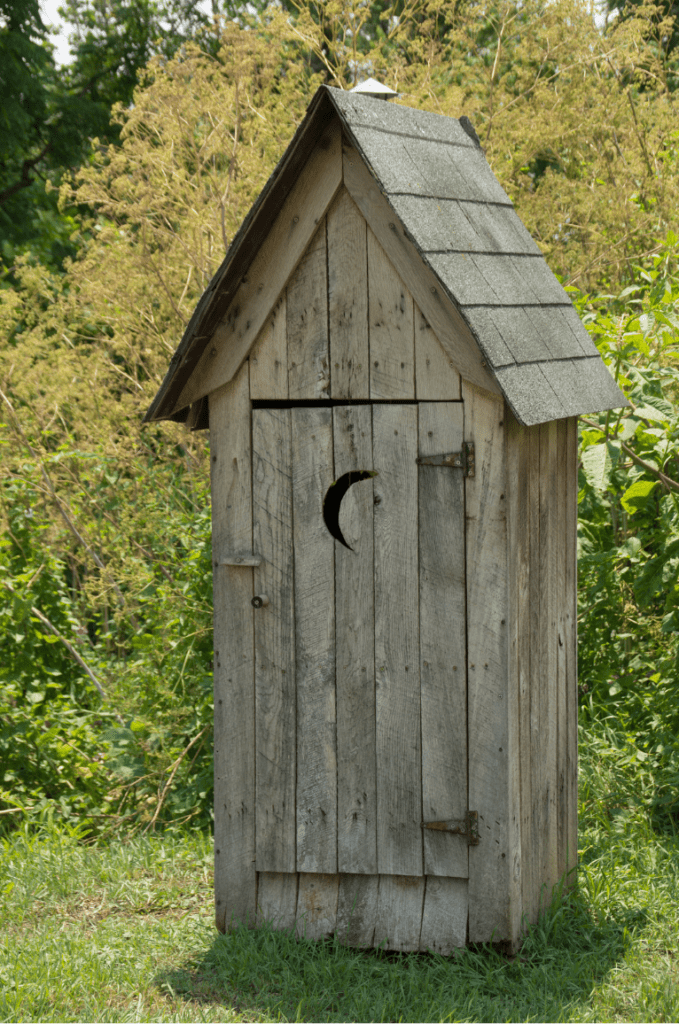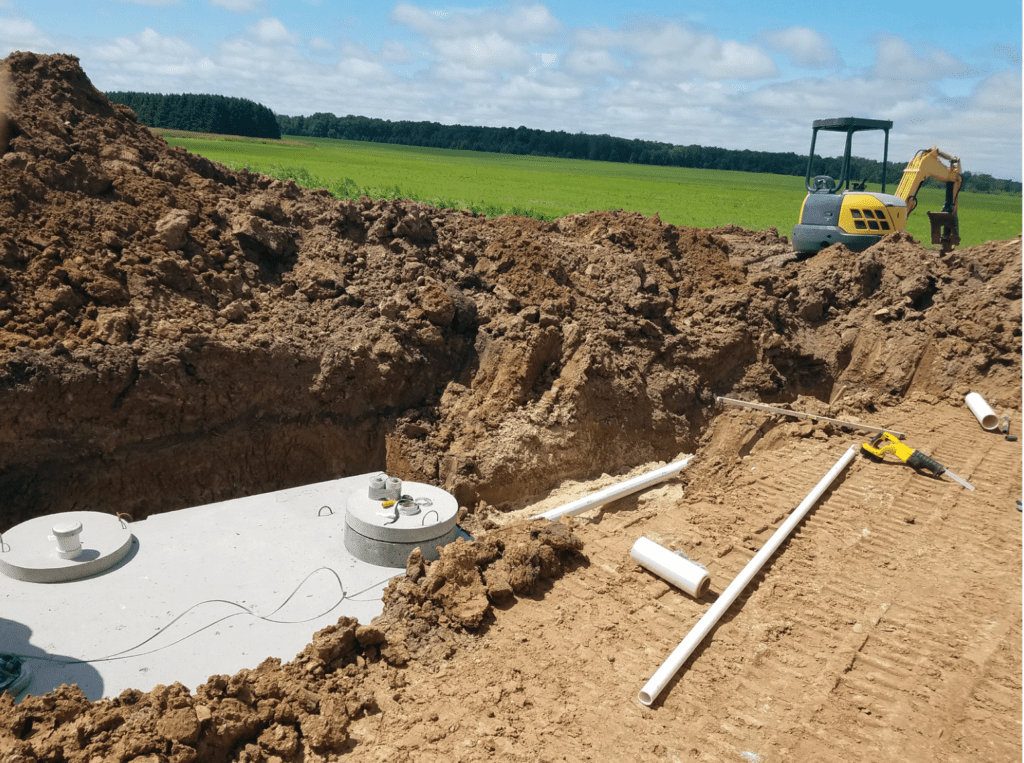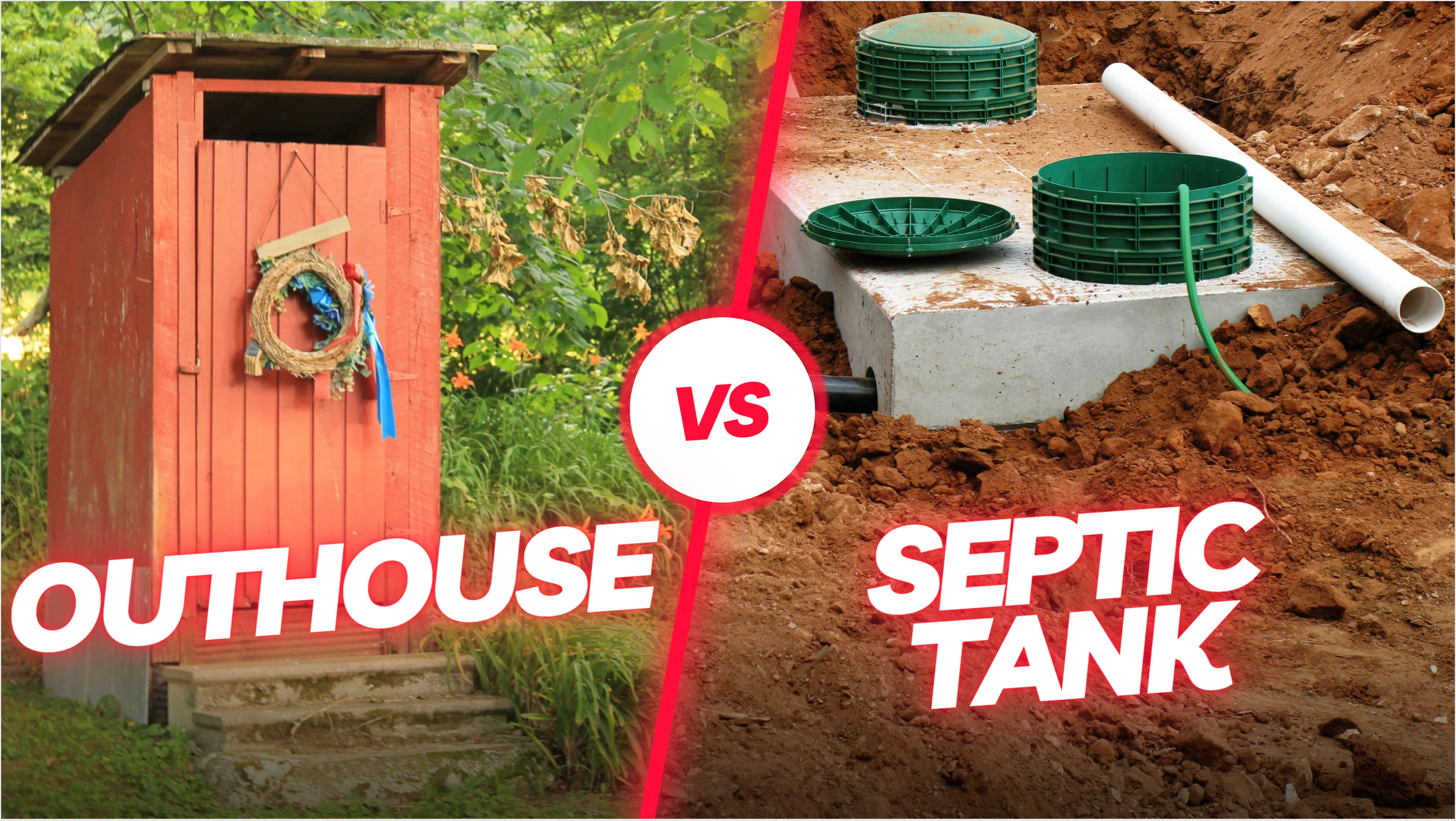Ready to dive into the world of waste management? We’re focusing on two big players today: septic tanks and outhouses.
You’ve probably heard of both, but do you know how they really work? Or when you might use one over the other? Well, that’s what we’re here to talk about.
Septic tanks and outhouses come from different times and use different tech. Each has its own pros and cons.
So, are you ready? Let’s jump in and break down these systems. We’re going to look at how they work and what their real-world impacts are.
Whether you’re deciding what to use in your own backyard or just want to know more, we’ve got you covered. Let’s get started!
Understanding the Basics
Before we start comparing, let’s make sure we’re all on the same page about what we’re talking about.
What’s an Outhouse?

Ever heard of a privy or latrine? They’re just fancy names for an outhouse. It’s a simple little building away from your main house.
Inside, there’s a hole in the ground that serves as your toilet. No water or complex plumbing involved.
You do your business, and it drops straight into a pit. Over time, nature does its thing, and the waste decomposes.
Outhouses have been around for ages – thousands of years, in fact. Different cultures across the globe have used their versions of it.
Before we had toilets in our homes, everyone used outhouses. And guess what? They’re still used today.
If you’re in a remote or rural area where plumbing isn’t practical, an outhouse can be a real lifesaver.
Not to be confused with a Cesspool.
What’s a Septic Tank?
Now, a septic tank is a different beast. It’s an underground chamber, usually made of concrete, fiberglass, or plastic. Your home’s wastewater goes into this tank for some basic treatment.
The tank separates solid waste from water. The solids break down over time, and the water is safely returned to the environment.
The septic tank is a relatively new kid on the block, invented by a Frenchman named Jean-Louis Mouras in 1881.
As more people started living in the suburbs and rural areas in the 20th century, septic tanks became a hit. Why? Because they were perfect for homes far from city sewer lines.
Today, many homes, especially in rural and suburban areas, use septic tanks. They’re self-contained, efficient, and pretty good for the environment.

Comparing Outhouses and Septic Tanks
Alright, we’ve got the basics of outhouses and septic tanks down. Now, let’s put them head-to-head in terms of efficiency, sustainability, installation and upkeep, health and safety, and, of course, cost.
Efficiency and Sustainability
When it comes to efficiency, septic tanks usually win. They treat waste before letting it back out into the environment.
Outhouses are a bit slower. They let nature do its thing, but space can become an issue.
Both have their green points, though. Outhouses don’t need water or power, and you can compost the waste in the long run.
Septic tanks treat waste right there on your property. That means you don’t need a big wastewater treatment plant with all its infrastructure and energy use.
Keep either system well-maintained, and you’ve got an eco-friendly solution.
Installation and Maintenance
Putting in an outhouse is pretty simple. Dig a pit, build a little structure over it, and you’re good to go.
Septic tanks are a different story. You need a pro to dig the hole, put in the tank, and set up the drain field.
Taking care of a septic tank means regular checks and pumping every 3 to 5 years. For an outhouse, you add organic material regularly.
When the pit’s full, you either empty it or build a new outhouse. That might sound easier, but it can be a dirty, physically hard job.
Health and Safety Considerations
Both systems can be risky if you don’t take care of them. A neglected outhouse can attract bugs and rodents.
If it’s too close to a well or water source, it could contaminate the water. If you don’t pump your septic tank regularly, you could end up with a messy failure, like sewage backing up into your home.
The key for both is to stick to the rules and best practices. That means picking the right spot away from water sources and keeping up with regular maintenance.
Cost Analysis
Outhouses usually cost less to put in. Most of your money goes to building the structure and digging the pit.
Installing a septic tank can be a bigger hit to your wallet. You’re paying for the tank, professional installation, and setting up the drain field.
Over time, you’ll have to pay to pump your septic tank regularly. For an outhouse, you might need to build a new one or hire someone to empty the pit.
But compared to the ongoing cost of being connected to a city sewer system, both can save you money in the long run.
Choosing Between an Outhouse and a Septic Tank
Deciding between an outhouse and a septic tank? It’s not as simple as eeny, meeny, miny, moe. You’ve got to think about your location, local rules, your own tastes, and the specifics of your situation.
What You Should Consider When Making Your Decision
Local Rules: Some places don’t allow outhouses because of health and environmental concerns. So, before you decide, check with your local health department or permit office.
Your Property: Septic systems need space and the right kind of soil for the drain field. If your property is small or has unsuitable soil, an outhouse could be your only choice.
Water Source Location: Both outhouses and septic tanks need to be far enough from wells or other water sources to avoid contaminating them.
How Often You’ll Use It: An outhouse could be enough for a holiday cabin you only use a few times a year. But if you’re living somewhere full-time, a septic tank might be a better fit.
Budget: Think about both the initial cost of installation and the ongoing maintenance costs for each system.
When an Outhouse Might Be Your Best Bet
Here are a few situations where an outhouse could be the way to go:
Remote or Off-Grid Locations: Got a remote cabin or living off the grid? An outhouse could be a practical, wallet-friendly solution.
Temporary Needs: If you’re building a new home and need a stop-gap solution, or you need facilities for seasonal farm workers, an outhouse could be just the ticket.
Historical or Environmental Reasons: Some people like outhouses for their simplicity, low water use, or because they fit with the historical feel of a property.
When a Septic Tank Might Be a Better Choice
And here’s when you might want to opt for a septic tank:
Full-Time Homes: If you’re living somewhere all year round, a septic tank can give you more convenience and cleanliness.
Big Families or High Usage: Septic systems can deal with more waste more efficiently. So, they’re a good choice for larger families or anywhere that’s going to get a lot of use.
When You Prefer Indoor Plumbing: Want the convenience of flushing toilets and an easy way to connect other appliances that produce wastewater? Go with a septic tank.
Just remember, the choice between an outhouse and a septic tank isn’t just about what you want. It’s crucial to think about local rules, the environment, and practical issues before you make up your mind.
Conclusion
Outhouses and septic tanks serve as important waste management solutions, each with their own pros and cons.
Outhouses are low-cost and low-tech, suitable for remote or temporary settings, while septic tanks offer a more efficient and sanitary option for full-time homes.
Choosing between the two depends on factors like location, budget, and regulations.

